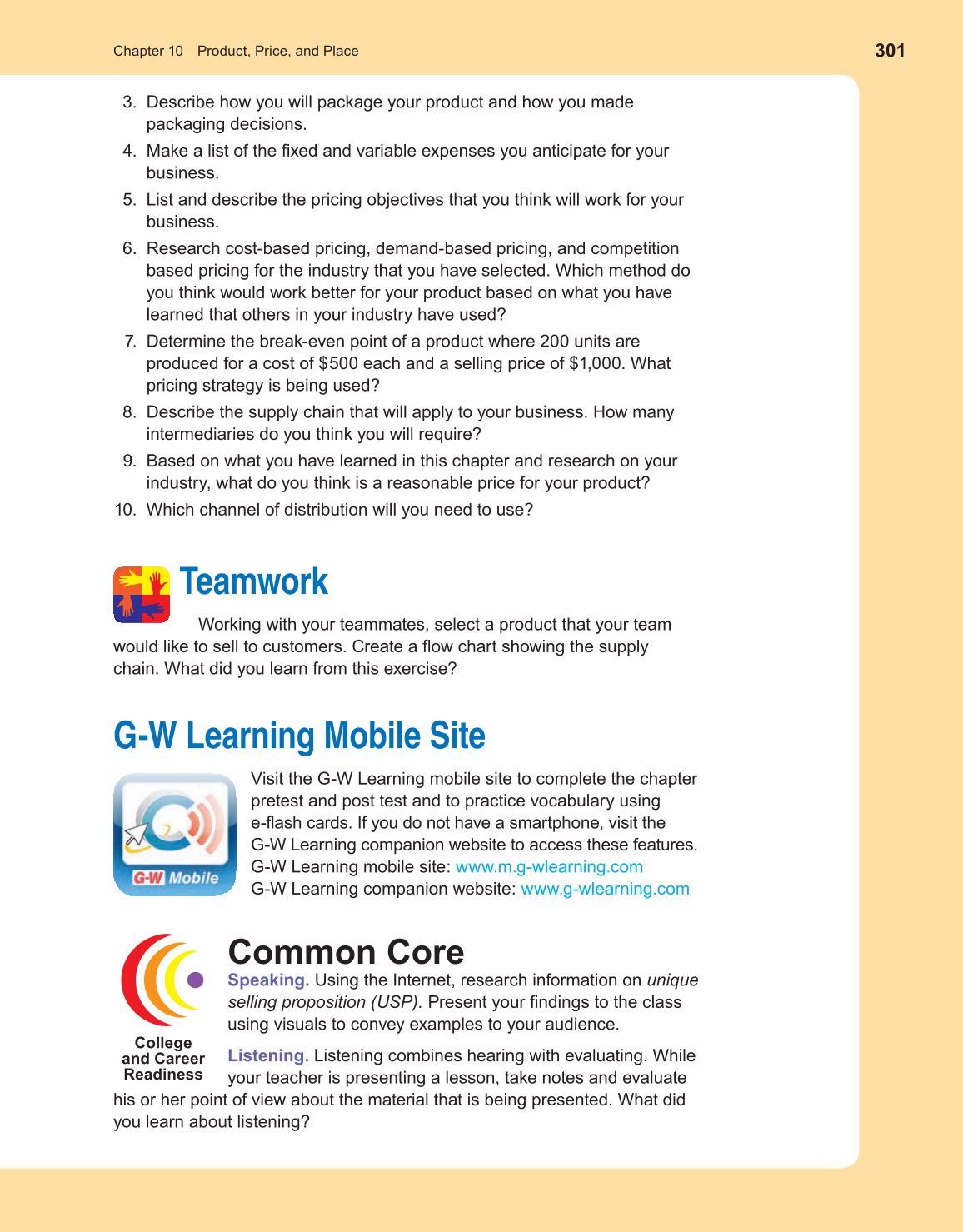301
Chapter 10 Product, Price, and Place
3. Describe how you will package your product and how you made
packaging decisions.
4. Make a list of the fixed and variable expenses you anticipate for your
business.
5. List and describe the pricing objectives that you think will work for your
business.
6. Research cost-based pricing, demand-based pricing, and competition
based pricing for the industry that you have selected. Which method do
you think would work better for your product based on what you have
learned that others in your industry have used?
7. Determine the break-even point of a product where 200 units are
produced for a cost of $500 each and a selling price of $1,000. What
pricing strategy is being used?
8. Describe the supply chain that will apply to your business. How many
intermediaries do you think you will require?
9. Based on what you have learned in this chapter and research on your
industry, what do you think is a reasonable price for your product?
10. Which channel of distribution will you need to use?
Teamwork
Working with your teammates, select a product that your team
would like to sell to customers. Create a flow chart showing the supply
chain. What did you learn from this exercise?
G-W Learning Mobile Site
Visit the G-W Learning mobile site to complete the chapter
pretest and post test and to practice vocabulary using
e-flash cards. If you do not have a smartphone, visit the
G-W Learning companion website to access these features.
G-W Learning mobile site: www.m.g-wlearning.com
G-W Learning companion website: www.g-wlearning.com
Common Core
Speaking. Using the Internet, research information on unique
selling proposition (USP). Present your findings to the class
using visuals to convey examples to your audience.
Listening. Listening combines hearing with evaluating. While
your teacher is presenting a lesson, take notes and evaluate
his or her point of view about the material that is being presented. What did
you learn about listening?
College
and Career
Readiness
